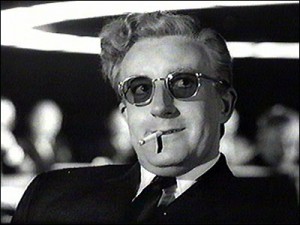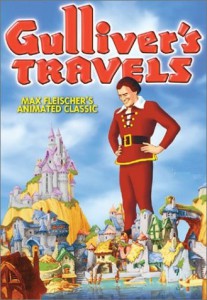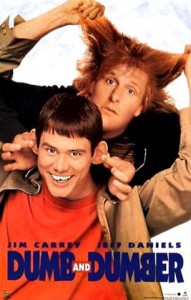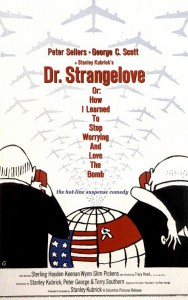Comic characters work best when they are built from a simple base. Simplicity is the chief imperative, whether you’re inventing a character from the ground up, or applying new attributes to an ancient archetype.
True, comic characters may present complex combinations of warring attributes, and comic delivery can range from the subtle to the painfully blunt. But to make an audience laugh, comedy and its characters must present its complexities simply. Audiences don’t laugh and scratch their heads at the same time. No matter the layers of a given comic character they must be simple and recognisable at heart. There are no reliable and consistent audience laughs at the halfway mark between complexity and simplicity just because that’s where real life sits. Adding too many real life complexities to characters can blunt the comedy.
warring attributes, and comic delivery can range from the subtle to the painfully blunt. But to make an audience laugh, comedy and its characters must present its complexities simply. Audiences don’t laugh and scratch their heads at the same time. No matter the layers of a given comic character they must be simple and recognisable at heart. There are no reliable and consistent audience laughs at the halfway mark between complexity and simplicity just because that’s where real life sits. Adding too many real life complexities to characters can blunt the comedy.
It is a mistake to see this demand as a limitation: it’s an opportunity. And it’s ignorant to view it as an inadequacy of the comedy writing craft: it’s a unique aspect of the art.
Anyone in any field of human endeavour knows that genius is first found in simplicity. The invention of the paper clip, the ballpoint pen and even the wheel were all arguably acts of genius that came after long contemplation, trial and error. Their simplicity results from the discarding of all the elements extraneous to their purpose, and the distillation of the remaining elements to an elegant and durable tool.
COMIC CHARACTERS AND THEIR WORLDS
There are fundamental demands, elements that must be created and ‘kept’ that are particular to the genius of creating comic characters and their worlds. One is that they need an imbalance of perspective. 
This imbalance may be between a normal character in a comic world, such as the everyday Gulliver (Gulliver’s Travels) in the extraordinary land of Lilliput. Gulliver is what might be called a ‘Straight Man’ surrounded by peculiar warring cultures. The Straight Man is common in comedies, providing a sane moral centre to the ludicrous action.
The comedy’s imbalance may be between a comic character in a normal world – David Brent (The Office) is an extremely bad boss in an ordinary paper company.
Imbalance may be found in a comic character/uncommon world setting such as Gilligan’s Island, where the archetypal idiot Gilligan contends for survival in the extraordinary setting of a deserted island.
Finally, ongoing comic conflict between the characters, their setting and the audience can be found in the satirical world of South Park, where even the weekly deaths of young Kenny are accepted by the town’s characters.
THE FLAWED SLAVES OF COMEDY
Aristotle (Poetics) said ‘Comedy is an imitation of characters of a lower type – however, not in the sense of the word “bad” … it consists in some defect or ugliness which is not painful or destructive. To take an obvious example, the comic mask is ugly and distorted, but does not imply pain.’ 
Comic characters in Aristotle’s time were typically slaves, the ‘lower type’ of person in Ancient Greek society. The notion that all people are born equal, including foreign slaves, and that human flaws are ubiquitous, had not yet caught on.
Today’s comic characters may have a wider range of employment opportunities than those of Ancient Greece and Rome, but some fundamental elements remain. For example, George Costanza (Seinfeld) could be defined as a modern ‘lower type’. He’s intermittently jobless, broke, single and living with his parents; he’s as flawed and disempowered as an ancient slave.
The similarities between ancient and contemporary comic characters go beyond their social status. Deep human flaws are the most common component of all comic characters. These flaws can include qualities like weakness, insensitivity, compulsive dishonesty, overreaching ambition or any of the Seven Deadly Sins. These kinds of qualities can be the prime motivators of a given comic character in their everyday life. In Kath & Kim, Kim’s selfishness is her most obvious and irreparable flaw, repeatedly leading her into trouble and blinding her to the feelings of others.
Comic characters often feature ironic combinations of characteristics. Roles in life can be juxtaposed with incongruous flaws or outlooks. Olympics administrators who have little interest in sport (John, Brian and Gina, The Games), a newsreader who doesn’t read the paper (Michael Moore, Frontline) or a mother who is obsessed with herself (Mother & Son) are all regularly forced to act against their nature. This inner-conflict means that intentionality and outcome rarely match. And their ‘defect’ is permanent.
Simple flaws can work in subtle ways not overtly apparent to the audience, yet capable of driving a comic character to extreme action. Jerry Seinfeld (Seinfeld) seems to be a well-rounded guy. He’s smart, likable, professionally capable and attractive to women. His moral compass is largely accurate and he’s generous with his time and belongings. So why do we laugh at him? Jerry’s main flaw is his lack of proportion and perspective. This renders all his benign qualities redundant. It drives his stories and represents the theme of the series.
Jerry often becomes obsessed with trivial things and treats important things as trivial. When he drops a potential girlfriend because he suspects she has fake breasts (‘The Implants’), he’s being too particular about a trivial issue (surely true love is blind to implants?) An instance of Jerry treating the important as trivial comes when he watches a man undergo vital abdominal surgery (‘The Junior Mint’). Jerry nibbles on mints as if he’s watching a movie or ballgame.
COMIC ARCHETYPES & THE SEED OF CHARACTER
To avoid comic archetypes becoming stereotypes or clichés, place them in a fresh identity and setting of your own devising.
Stanley Kubrik’s Dr Strangelove or: How I Learned to Stop Worrying and Love the Bomb is widely regarded as a breakthrough in cinema satire. The story concerns the US President’s attempts to save the world from nuclear obliteration when an insane US Air Force general orders a nuclear strike on the Soviet Union. The film features archetypal characters in incongruous guises.
The runaway B52 bomber commander, Major T.J. ‘King’ Kong, is written and played as an archetypal cowboy. Clad in a cowboy hat and boots, he speaks with a strong Southern accent and yells ‘Yee-ha!’ as he rides a falling hydrogen bomb as if it’s a rodeo bull. Doctor Strangelove himself is depicted as a classic Mad Scientist archetype. The signs of his madness manifest in his ludicrous plans for humanity’s future and his failure to control his Hitler-saluting right arm. The US President seems more suited to a primary school staff room than the heart of American military power. His conversations with the Russian leader have the hallmarks of a petty squabble between an indulgent teacher and a child – ‘[Major Kong] went and did a silly thing. Well, I’ll tell you what he did, he ordered his planes to attack your country. Well, let me finish, Dmitri. Let me finish, Dmitri. Well, listen, how do you think I feel about it?’
At the height of tensions, the President cries out in desperation, ‘Gentlemen, you can’t fight in here – this is the War Room!’ The line’s inherent contradiction renders it laughable. Like the archetypal character that utters it, the line’s role is to capture the essence of the film’s message – that the concept of peace through nuclear armament is mad.
It is no accident that Dr Strangelove features these ironic character attribute combinations. What could be worse than a cowboy with a nuke a Fascist scientist and a wimpy US President taking charge of humanity’s future?
Having established its ironic archetypes swiftly, Dr Strangelove places them under extraordinary pressure. The characters then go through their motions in a way that’s as horrifying as it is inevitable.
Archetypes can provide writers with a seed, the essence of a character.
Roman playwright Titus Maximus Plautus developed many stories about a cunning slave, an arrogant old master and his lovably idiotic son. Plautine plots and characters provided the basis for Commedia D’ell Arte and hundreds of English Restoration comedies.
One modern instance of these three Plautine archetypes can be found in the BBC sitcom Blackadder the Third. Blackadder is a classic cunning servant. His status is frozen, he has high self-regard, lies and cheats to achieve meagre aims and aspires without hope. He’s confounded by his arrogant buffoon master, Prince George, and annoyed by his idiot colleague, Baldrick.
The Plautine Idiot archetype is lovable but blinded by his own limited awareness. This character can be counted on to grab the wrong end of the stick, creating misunderstandings that spark and power a comic story. The Idiot is gullible, trusting and incapable of keeping secrets. He takes euphemisms literally and sarcasm on face value. If there’s something that shouldn’t be said, the Idiot will move a story along by (innocently) saying it.
Sound familiar? It should. Randall Winston, the Mayor of NYC (Spin City), Kelso (That 70’s Show) and Sheldon (Big Bang Theory) share the Idiot’s classic characteristics. Yet each has been given his own distinct role in life, physical characteristics, outlook, status, cultural background, prejudices, strengths, weaknesses, wants, fears and emotional needs. They share their archetype’s flaws but have their own, too. Randall Winston is weak-willed, Kelso is driven by lust and Sheldon is a genius in all things except basic life skills. It is the archetype’s key characteristics, however, that provide their writers with tools to regularly place all three characters in hot water. (Don’t worry, fellow feminists – Alice in The Vicar of Dibley, Rose in The Golden Girls and Betty in Hey… Dad! show that the Idiot can also be a woman.)
It’s arguable that film genres work in the same way as archetypal characters. Being John Malkovich, I Love You Too and Crocodile Dundee stem from Romantic Comedy’s generic story pattern (Cute Meet, 2nd Significant Meet etc). Like archetypes, they stem from the same seed yet deliver starkly different results.
Theme is the primary guiding force for any film or TV show. This is the case whether the project is entirely new, applies archetypal characters or complies with a genre. Dr Strangelove’s characters all reinforce its theme by displaying the inadequacies and eccentricities of those with the power to destroy mankind. Fail Safe is a dramatic film from the same era that tells a similar tale. Its US President is wise and noble. If he’d appeared in Dr Strangelove, he’d have been ignored by the other characters or done away with because his voice of reason would not have confirmed the film’s theme.
The theme of Notting Hill relates to sacrifice of one’s private wants for the emotional need of true love. Being John Malkovich’s theme regards acceptance of one’s own identity as the only path to true love. As the moral purpose of each film is its own, their stories play out in markedly different ways.
LAYERING COMIC CHARACTERS
Having chosen a role in life and a key ironic attribute for a comic character, you can begin adding layers. The most effective approach is to draw from the character’s ironic attribute.
Don’t bother with devising a detailed backstory. Backstories are largely useless writing tools, unless those stories are intrinsic to the current plot, in which case just write the plot. The audience is never told what made Basil Fawlty (Fawlty Towers) the way he is, but we can guess – a lonely life at private school, a gruff and bullying father, childhood dreams dashed by reality… Perhaps wondering about what awful experiences could have forged Basil Fawlty’s personality is more entertaining than hearing about them.
Basil is a classic Farce protagonist. These characters are the main provocateurs of conflict in their worlds. Basil’s abrasive nature places him at odds with everyone he meets.
His key ironic characteristic is that he’s the rudest Bed & Breakfast manager in his world. His rudeness is his most active and enduring quality.
Having chosen this ironic attribute, all sorts of bells and whistles appear that relate to and underpin his rudeness. Basil is short-tempered, prejudiced, self-loathing, thin-skinned, judgmental, spiteful, frustrated with his lot… His list of flaws is almost endless and each flaw is revealed as the situation demands. Fawning and slavish obeisance may seem at odds with Basil’s nature, but when a man he mistakenly believes is a British Lord comes to stay, Basil becomes as sycophantic as a hungry puppy. This quality is a mild surprise to the audience, but it’s the natural underside of his snobbery, and it adds a layer of complexity to his personality.
No one could ever accuse Basil of being subtle. He presents an exaggeration and distillation of a rude Englishman. He’s not just rude – he’s rude to the point of being barely believable. He lacks the nuances we might expect from a more realistic dramatic character.
Comedy’s primary imperative – involuntary audience laughter – trumps believability. The simplicity and clarity of his core nature allows the audience to know exactly what he’s thinking at all times. We’re not scratching our heads or marvelling at the mysterious depths of this man. We are laughing despite ourselves at his all-too-clear flaws in action. That we all share at least one of his flaws makes the comedy sharper.
And it is here that a crucial element of comic character development appears. Though we wouldn’t like to meet Basil, we care whether he wins or loses. Like Blackadder or Ted Bullpit (Kingswood Country), Basil Fawlty generates our empathy and sympathy through his universally recognisable flaws and aspirations.
Though comic characters can be fools, rascals or saboteurs, we care about them because they represent a mirror. The easier it is to recognise ourselves in that mirror, the more we will laugh at our own foibles.
CREATING COMEDY CHARACTERS
An article by Tim Ferguson in AFTRS Lumina Magazine (7th Edition)

